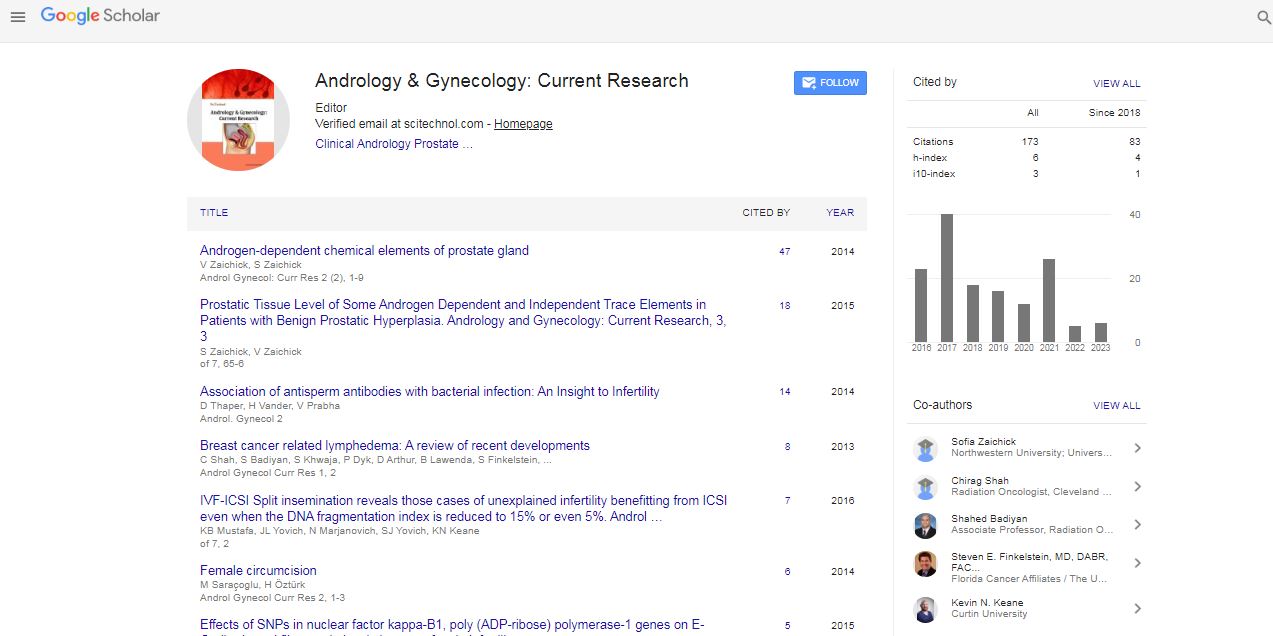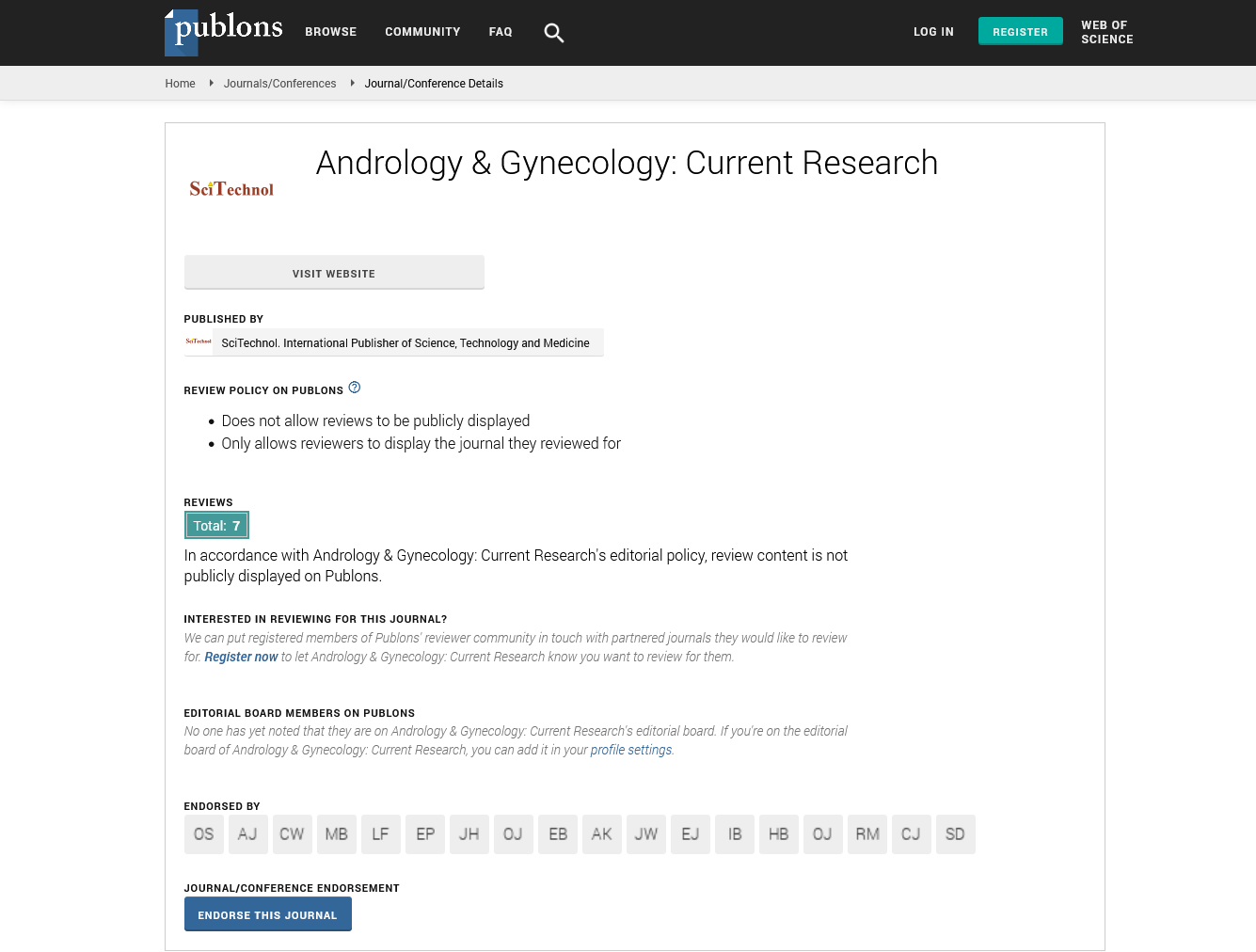Editorial, Androl Gynecol Curr Res Vol: 1 Issue: 1
Male Infertility: Implication and Ethics
| Paulo F. Taitson* | |
| Division of Human Reproduction, Pontifical Catholic University of Minas Gerais (PUC Minas), Brazil | |
| Corresponding author : Paulo F. Taitson, PhD Division of Human Reproduction, Pontifical Catholic University of Minas Gerais (PUC Minas), Brazil E-mail: taitson@pucminas.br |
|
| Received: December 12, 2012 Accepted: December 13, 2012 Published: December 17, 2012 | |
| Citation: Taitson PF (2012) Male Infertility: Implication and Ethics. Androl Gynecol: Curr Res 1:1. doi:10.4172/2327-4360.1000e103 |
Abstract
Male Infertility: Implication and Ethics
The reproductive science has always fascinated me. It is twenty years studying, growing and seeking answers to male infertility. There are great textbook on testicular physiology, but little known about the environmental effects on the testis. The sperm is a single cell in essence. His strength on the path towards the ovum in the female genital tract is singular.
| The reproductive science has always fascinated me. It is twenty years studying, growing and seeking answers to male infertility. There are great textbook on testicular physiology, but little known about the environmental effects on the testis. The sperm is a single cell in essence. His strength on the path towards the ovum in the female genital tract is singular. However, we have to go a long study of embryo implantation. Decade to decade new evaluation parameters of human semen arise. Herself, the World Health Organization (WHO) criteria stipulated new manual for the examination and processing of human semen. | |
| Despite this success, it has become apparent that some recommendations from previous editions of the manual needed to be revised in light of new evidence, and that some concepts needed more explanation and supporting evidence. Prompted by these considerations, WHO established an editorial committee to review all the methods described in the manual, with a view to endorse, change or update them. In many instances, this proved difficult, as insufficient data had been obtained using the methods described in the manual. In some cases, single well accredited laboratories were obtaining consistent results, but these had not been confirmed by others. For these situations, the editorial committee developed a consensus position after evaluating the pertinent literature. | |
| Additional recommendations were received from technicians and scientists, notably regarding the need for more detail for many of the methods described. Lack of detail in previous editions has meant that some laboratories have preferred to use methods described elsewhere, or have developed their own versions of methods, while still claiming to perform semen analysis according to the WHO manual [1]. | |
| In recent years research has led to a far better understanding of male reproductive physiology and a much greater knowledge of many of the causes of male infertility. Morphological methods have expanded our knowledge of the exocrine function of the testis; today the work-up of male infertility can be done with reasonable and objective accuracy. Microsurgery of the male reproductive system and testicular cancer has become a challenge to the researcher; a percentage of patients with azoospermia can be operated upon successfully for ductal obstruction. Male factor infertility contributes partially and solely to the problem of childlessness in around 50% of the cases. Unfortunately, 30–50% of the etiologies of male infertility are unknown and therefore, no specific therapy can be instituted. Evidence-based medical therapy for male infertility is an attractive research area where a large number of clinical trials, controlled and uncontrolled, using different types of medications have been conducted yielding variable results and outcomes [2]. | |
| Recently bioethics has occupied a prominent space in our research group. For man is important to review concepts set goals in the light of principles of identity and non maleficent. Let us be engaged in discovering more and more the role of fertility in male reproductive science. But even as we seek answers to these questions and ponder the need for institutional reforms, we do think that the nation would benefit from a series of targeted interim legislative measures that would safeguard certain important ethical boundaries. Accordingly, we propose a series of modest yet precise legislative proposals targeting certain unethical or disquieting practices in human reproduction-for example, attempts to conceive children other than by the union of egg and sperm, or to produce a hybrid animal-human embryo, to initiate a human pregnancy for any purpose other than to produce a liveborn child [3,4]. | |
References |
|
|
 Spanish
Spanish  Chinese
Chinese  Russian
Russian  German
German  French
French  Japanese
Japanese  Portuguese
Portuguese  Hindi
Hindi 


